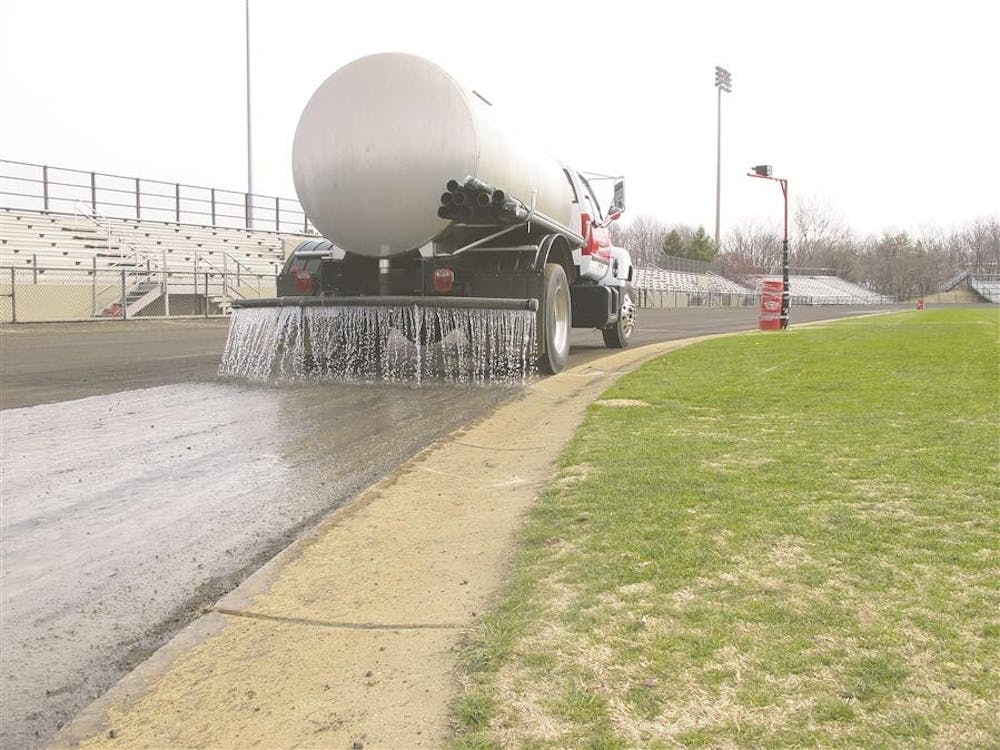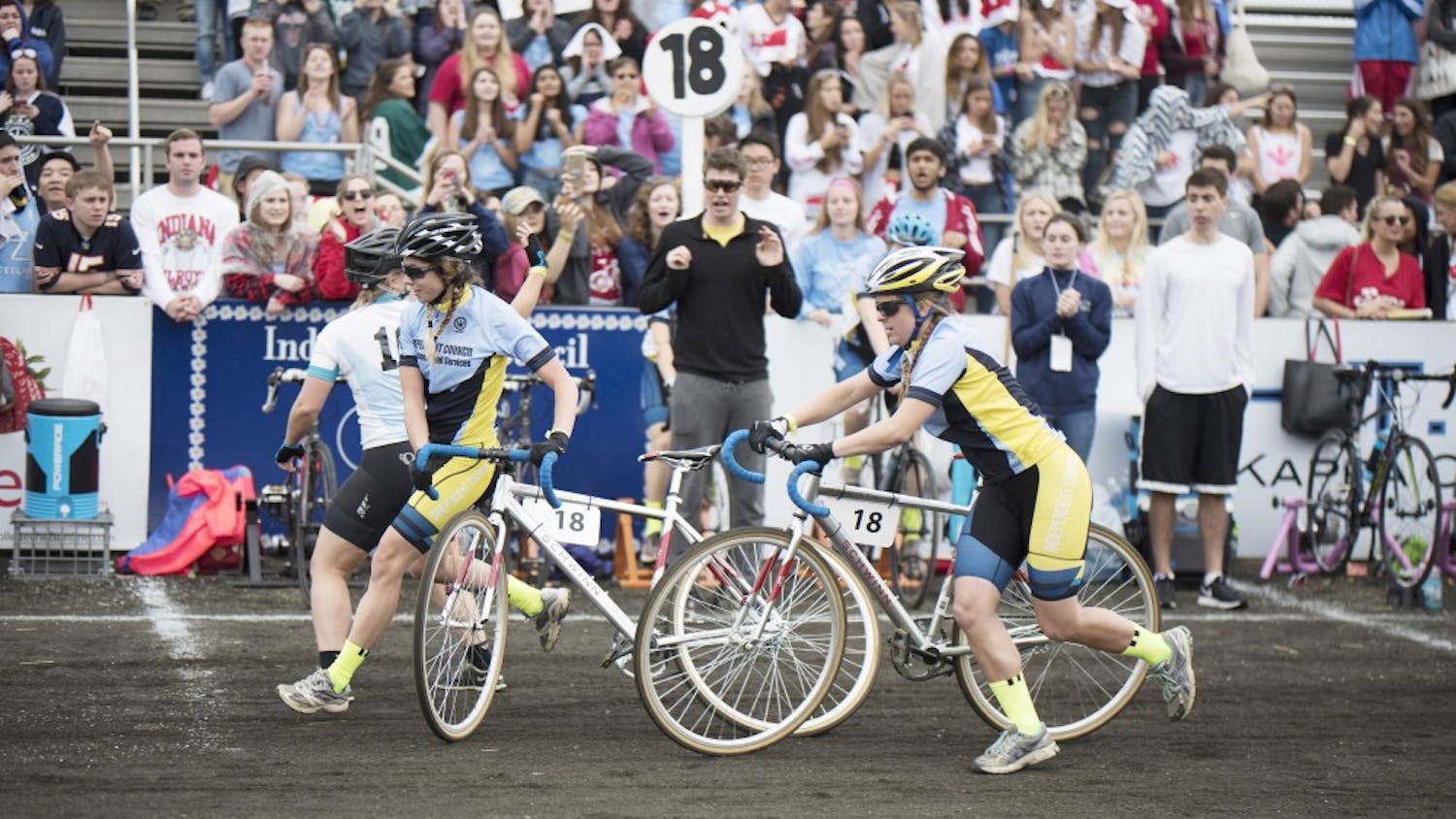While thousands watch the racing action on the grand stage of the Little 500, two men will be watching the stage itself — the one-of-a-kind cinder track that circles inside Bill Armstrong Stadium. These two men, Wally Hansford and Steve McCutchen, make up the entire staff of track caretakers.
“Our job’s to worry about the integrity of the track,” Hansford said. “Steve and I, our part is track surface. There are many, many, many people involved with safety programs, riders, events. This is what we do.”
Starting in February, these two come to Bill Armstrong at least five days a week and go through the same process every day.
“We drag, roll, water, blow and paint every day,” Hansford said. “It’s in that order.”
What does that mean, exactly? It’s a fairly repetitive and weather-reliant process that involves a great deal of large machinery and on-the-go decision making.
THE PROCESS
1. Hansford and McCutchen arrive early in the morning, sometimes having to wait for the track to thaw before going to work. After it thaws, the first step is to drag the track with a large brush-like device that smooths out the track and prepares it for the next step: being packed down.
2. One of the two, usually McCutchen, climbs aboard the rubber tire compactor and drives around the track. The 10,000-pound machine rolls slowly across the cinders, packing them down tightly and making the track harder and less gravel-like.
3. Gerald Freeman then brings his water truck and waters down the track with 4,000 gallons of water per day, sometimes more. The cinder surface is very porous, so only enormous amounts of water will keep it in good shape for the riders.
4. One of the two, usually Hansford, then boards the Toro “blower,” as the two refer to it. This sends excess cinders and dirt flying away from the middle of the track. This machine was instrumental in allowing the men’s Little 500 to continue last year, as Wally blew the collected rainwater that forced the delay off the track, allowing the show to go on.
5. Finally, the pair paints the lines on the track. They paint the starting lines and median lines. They’ve had plenty of practice, as they’ve painted soccer, football, baseball and just about any other athletic field on campus for years.
They’ve studied mathematical formulas to improve their accuracy, and it has paid off, resulting in almost perfectly straight lines.
Then they’re done for the day. The whole process usually takes about four hours to complete.
Little details about the process, like how many laps to do on the rubber tire compactor or how much water to pour on the track, are made in accordance with the weather.
“I try not to get too carried away, but this track, because of the nature of it, being cinders and everything, it’s an entity in and of itself,” McCutchen said. “What worked last week may not work this week. You’ve just got to stay on top of it.”
Meet the keepers of the one-of-a-kind Little 500 cinder track

Get stories like this in your inbox
Subscribe




